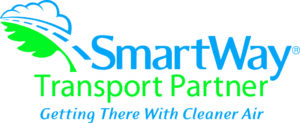 Anacostia Rail Holdings Company (ARH) announced today that all six of its short-line railroads have become certified Partners of the U.S. Environmental Protection Agency EPA SmartWay ® Transport Partnership (www.epa.gov/smartway).
Anacostia Rail Holdings Company (ARH) announced today that all six of its short-line railroads have become certified Partners of the U.S. Environmental Protection Agency EPA SmartWay ® Transport Partnership (www.epa.gov/smartway).
Developed by the EPA and launched in 2004, SmartWay is a collaborative framework involving industry stakeholders and environmental groups to track and reduce emissions and fuel use in the transportation sector.
In addition to railroads, there are more than 3,000 SmartWay Partners that include truck, air and barge carriers and shipper, logistics and multimodal companies.
ARH subsidiary Pacific Harbor Line, Inc. (PHL), based near Long Beach, Calif. was the first short line to join SmartWay in 2014. The other five lines joined SmartWay effective April 29, 2021. They are:
- Chicago South Shore & South Bend Railroad;
- Gulf Coast Switching Company;
- Louisville & Indiana Railroad;
- New York & Atlantic Railway;
- Northern Lines Railway.
Chicago-based ARH is a private holding company. Its freight railroads serve seven states and handle the equivalent of some two million carloads annually.
ARH Chairman and CEO Peter Gilbertson notes that PHL became the first railroad in North America to upgrade its entire fleet of 24 locomotives above Tier 3 emission standards, which contributed to its winning the Short Line of the Year Award in 2009.
Gilbertson is proud of the Anacostia team. “They have performed a leadership role in the railroad industry to address issues involving the environment and sustainability.”
Since 2011, ARH and its subsidiaries have invested $38 million on modernizing their services with lower-emissions locomotives.
In addition, PHL has signed an agreement with Progress Rail for a 3,200-horsepower battery-powered switch locomotive. Expected to be delivered this fall, PHL No. 0000 will be capable of zero emissions, zero-idle, and low noise.
Railroads are cleaner, safer than trucks
“Railroads are cleaner and up to four times more efficient than trucks,” Gilbertson says. According to a study by the United States EPA , nearly 83 percent of greenhouse gas emissions produced by transportation sources come from passenger cars and freight/light duty trucks, of which motor carriers account for 23 percent. Railroads, by comparison, emit only 2.1 percent–or ten times less than trucks.
The environmental benefits of using rail are significant, Gilbertson explains. “For example, moving freight by rail in Minnesota in 2019 prevented emission of 9.05 million tons of greenhouse gas emissions –the equivalent of planting 137.1 million trees.”
In addition to being cleaner, Gilbertson says, “Freight railroads are 42 times safer than large trucks.” Referring to U.S. Department of Transportation sources, he cites, “In 2018, there were 151,000 injuries in crashes involving large trucks, versus 3,554 injuries related to rail freight.”
Besides being a booster of the SmartWay program, ARH is an active member of American Short Line and Regional Railroads Association’s Environmental Task Force. ARH also participates on the Association of American Railroads’ Greenhouse Gas Committee.
Short lines are critical to communities
Short lines are critical to communities they serve, Gilbertson notes. “Smaller, short-line railroads move one in five freight cars each year serving more than 10,000 customers annually. They provide the first and last mile of freight movement in every state except Hawaii, making them a critical piece of the U.S. freight network.”
1: United States Environmental Protection Agency (2021). Inventory of U.S. Greenhouse Gas Emissions and Sinks Report, 1990 – 2019: Retrieved from: https://www.epa.gov/sites/production/files/2021-04/documents/us-ghg-inventory-2021-main-text.pdf
